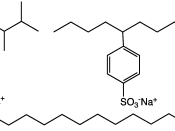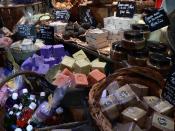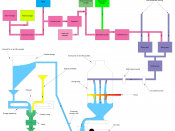Many people are confused about the difference between soap and detergent. Soaps and detergents are not the same thing, although both are surfactants, or surface active agents, which basically means a washing compound that mixes with grease and water. Soaps are made of materials found in nature. Detergents are synthetic (although some of the ingredients are natural); they were developed during World War II when oils to make soap were scarce. There is little doubt that soap is better for your health and the environment than detergents. Detergents are very toxic to fish and wildlife. Nonetheless, a big drawback of washing with soap is that the minerals in water react with those in soap, leaving an insoluble film. This can turn clothes grayish, and the film can leave a residue (such as is found on shower walls, for example).
Detergent is the active cleaning ingredient in washing powders, soaps, and some other cleaning materials.
Detergents are substances composed of long-chain molecules (see appendix 1 for diagram): one end of the molecule is hydrophilic (water-soluble), the other is hydrophobic (soluble in organic solvents). Grease, which is insoluble in water, is rendered soluble by the detergent because the hydrophobic parts of detergent molecules bury themselves in the grease particle and thereby cover its surface with hydrophilic groups, which are soluble in water (see appendix 2 for diagram). Provided the grease particle is not too large, it will be held in solution as if dissolved. Agitating the washing water breaks down the grease particles to a size that can be held in solution. There are two common types of detergent: soaps, which are manufactured from animal fats or vegetable oils; and soap less (synthetic) detergents, which are petrochemicals. The production of synthetic detergent involves several stages, each requiring a catalyst. Many synthetic detergents...


